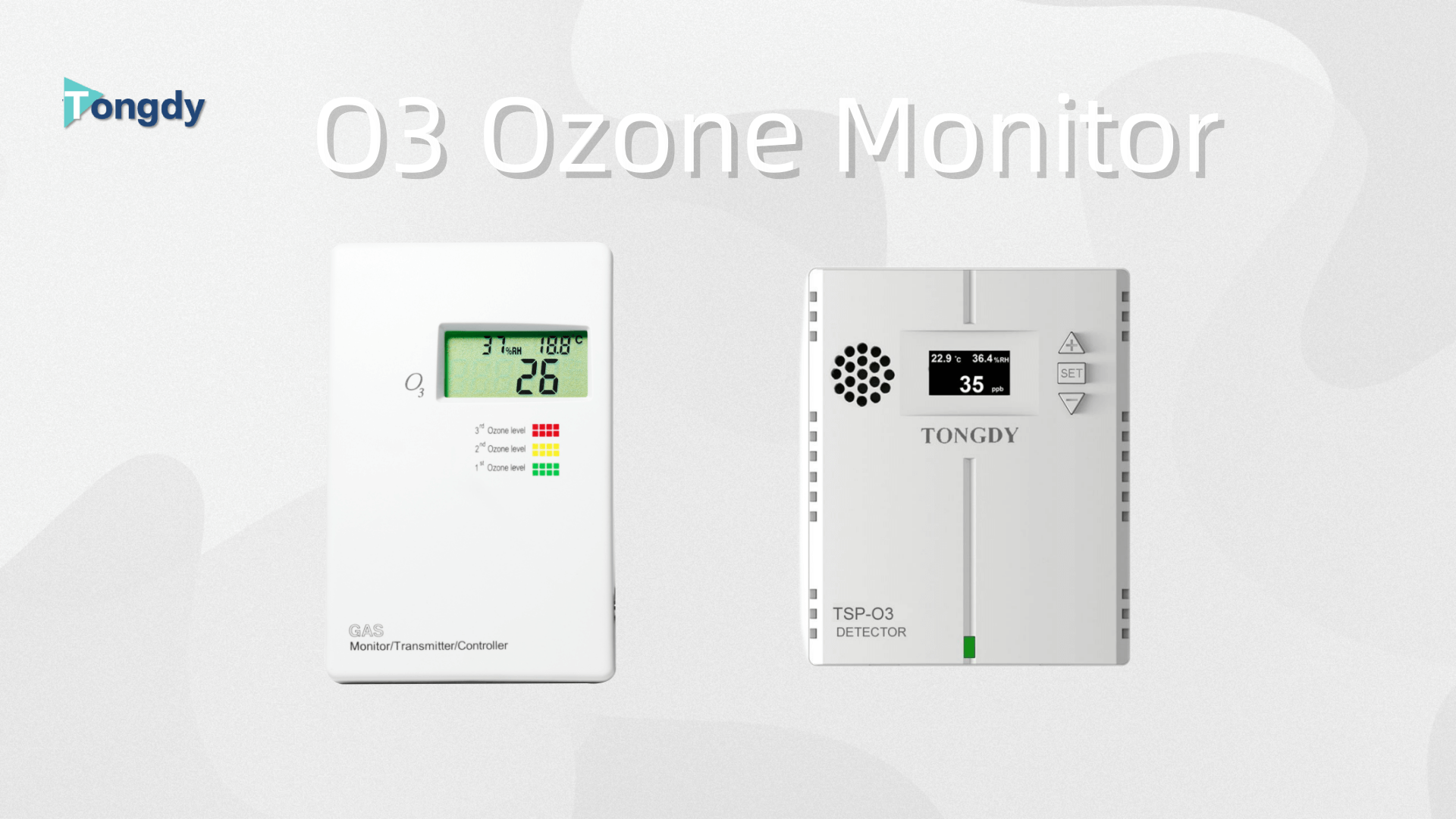The Importance of Ozone Monitoring and Control
Ozone (O3) is a molecule composed of three oxygen atoms characterized by its strong oxidizing properties. It is colorless and odorless. While ozone in the stratosphere protects us from ultraviolet radiation, at ground level, it becomes a harmful pollutant when it reaches certain concentrations.
High concentrations of ozone can trigger asthma, respiratory issues, and damage to exposed skin and the retina. Ozone can also enter the bloodstream, impairing its oxygen-carrying capacity and leading to cardiovascular conditions such as stroke and arrhythmia. Additionally, ozone can generate highly reactive free radicals in the body, disrupting metabolism, causing chromosomal damage to lymphocytes, compromising the immune system, and accelerating aging.
The purpose of an ozone monitoring and control system is to provide real-time, accurate monitoring of ozone concentration in the air, despite its colorless and odorless nature. Based on these readings, the system manages and regulates ventilation, air purification, and ozone generators to mitigate risks and ensure environmental and human health.
Types of Ozone Sensors
1. Electrochemical Sensors: These sensors use chemical reactions to produce an electric current proportional to the ozone concentration. They are known for their high sensitivity and specificity.
2. Ultraviolet (UV) Absorption Sensors: UV sensors operate by measuring the amount of ultraviolet light absorbed by ozone. Since ozone absorbs UV light, the amount of absorption correlates with the ozone concentration.
3.Metal Oxide Sensors: These sensors use metal oxide surfaces that change their electrical resistance in the presence of ozone. By measuring these resistance changes, the ozone concentration can be determined.
Applications of Ozone Monitors and Controllers
Environmental Monitoring
Ozone monitors track atmospheric ozone levels to manage air quality and assess pollution sources. This is crucial in industrial and urban areas to prevent and control air pollution.
Industrial Safety
In industrial environments where ozone is used or generated, such as in water treatment or chemical manufacturing, ozone monitors control ozone generators or ventilation systems to maintain required ozone levels while ensuring the safety and health of workers.
Indoor Air Quality
Indoor ozone is primarily produced by photochemical reactions, some electronic devices, and the breakdown of volatile organic compounds in furniture and building materials, as well as the impact of outdoor air quality. Photochemical reactions occur when nitrogen oxides (such as NOx) and volatile organic compounds interact with sunlight or indoor lighting, typically happening near indoor pollution sources.
Electronic Devices: Devices such as laser printers and copiers can release volatile organic compounds, which can contribute to the formation of indoor ozone.
Furniture and Building Materials: Items like carpets, wallpaper, furniture paints, and varnishes may contain volatile organic compounds. When these substances decompose in indoor environments, they can produce ozone.
It is important to measure and control ozone levels in real-time to ensure they remain within health and safety standards, preventing prolonged exposure to indoor ozone pollution without people realizing it.
According to an article on ozone and human health by the U.S. Environmental Protection Agency (EPA), "Ozone has two properties of interest to human health. First, it absorbs UV light, reducing human exposure to harmful UV radiation that causes skin cancer and cataracts. Second, when inhaled, it reacts chemically with many biological molecules in the respiratory tract, leading to a number of adverse health effects. This course addresses this second property."

Healthcare
In medical settings, ozone controllers ensure ozone used in treatments stays within safe limits to avoid harm to patients.
Vegetable Preservation
Research indicates that ozone disinfection is effective for preserving fruits and vegetables in cold storage. At a concentration of 24 mg/m³, ozone can kill mold within 3-4 hours.
Ozone control systems help maintain optimal ozone concentrations, which in turn improve the preservation and extend the freshness of vegetables and fruits.
Choosing the Right Ozone Monitor and Controller
Choosing the right ozone monitor involves ensuring that the device has high sensitivity and accuracy. This is crucial for timely and reliable measurement of ozone concentrations.
Select an ozone controller based on its measuring range and control outputs which meet your needs.
Choose an ozone monitor/controller that is easy to calibrate and maintain for ensuring accuracy.
Limitations and Challenges
Interference from Other Gases: Ozone sensors can be affected by other gases (e.g., NO2, chlorine, CO), impacting accuracy.
Calibration Requirements: Regular calibration is necessary and can be time-consuming and costly.
Cost: High-quality ozone controllers are expensive but essential for safety and accuracy.
Future of Ozone Sensing Technology
As ozone layer depletion worsens, accurate ozone monitoring for both outdoor and indoor environments becomes increasingly important. There is a growing demand for more precise, cost-effective ozone sensing technologies. Advances in artificial intelligence and machine learning are expected to improve data analysis and prediction capabilities.
Conclusion
Ozone monitoring and control systems are essential tools for real-time, precise management of ozone concentration. Through precise monitoring data, the controller can output corresponding control signals. By understanding how these controllers work and selecting the right product, you can effectively manage and control ozone concentrations.
FAQ
1.How does ozone differ from other gases?
Ozone (O3) is a molecule with three oxygen atoms and acts as a strong oxidant, unlike gases such as CO2 or NOx.
2.How often should I calibrate an ozone monitor?
Calibration frequency depends on usage and manufacturer recommendations, typically every six months.
3.Can ozone monitors detect other gases?
Ozone monitors are specifically designed for ozone and may not accurately measure other gases.
4.What are the health impacts of ozone exposure?
High ground-level ozone can cause respiratory issues, exacerbate asthma, and reduce lung function. Long-term exposure may lead to severe health problems.
5.Where can I buy a reliable ozone monitor?
Look for products and suppliers with rich experience in ozone gas products and powerful technical support, and long-term application experience.
Post time: Aug-21-2024
